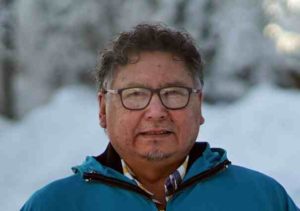
About midway down the Alaska Peninsula is Chignik, one of three small villages situated in the Chignik River watershed. For outsiders, this may seem an austere and even unforgiving place: steep mountains plunge to deep fjords and extensive lagoons. The weather can be extreme, and fog and mist typically shroud the land between storms. The population is sparse.
But for Orville Lind, his family and the Alutiiq people who are his relatives and friends, Chignik was a paradise, a landscape rich in natural resources and steeped in cultural significance. The Sugpiaq (which translates to “Real People”) have lived here for millennia, and their attachment to the Chignik bioregion is more than physical or social.
“We’re deeply connected to the food that the land and sea provide,” says Orville, the Native Liaison in the Office of Subsistence Management for the U.S. Fish and Wildlife Service.
